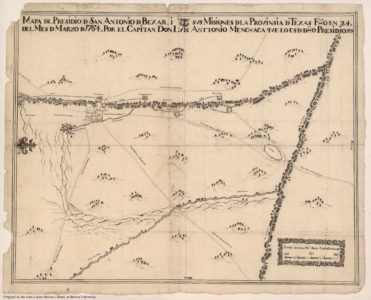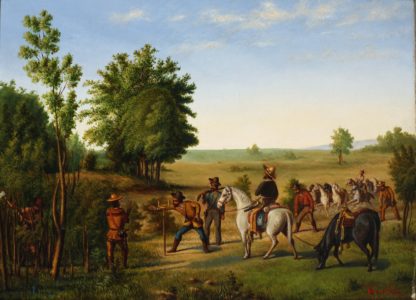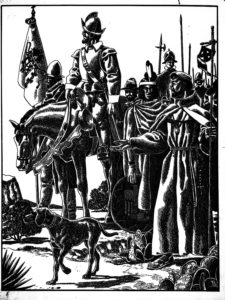Birth of Community
Audio Tour
Audio Guía
Image Gallery
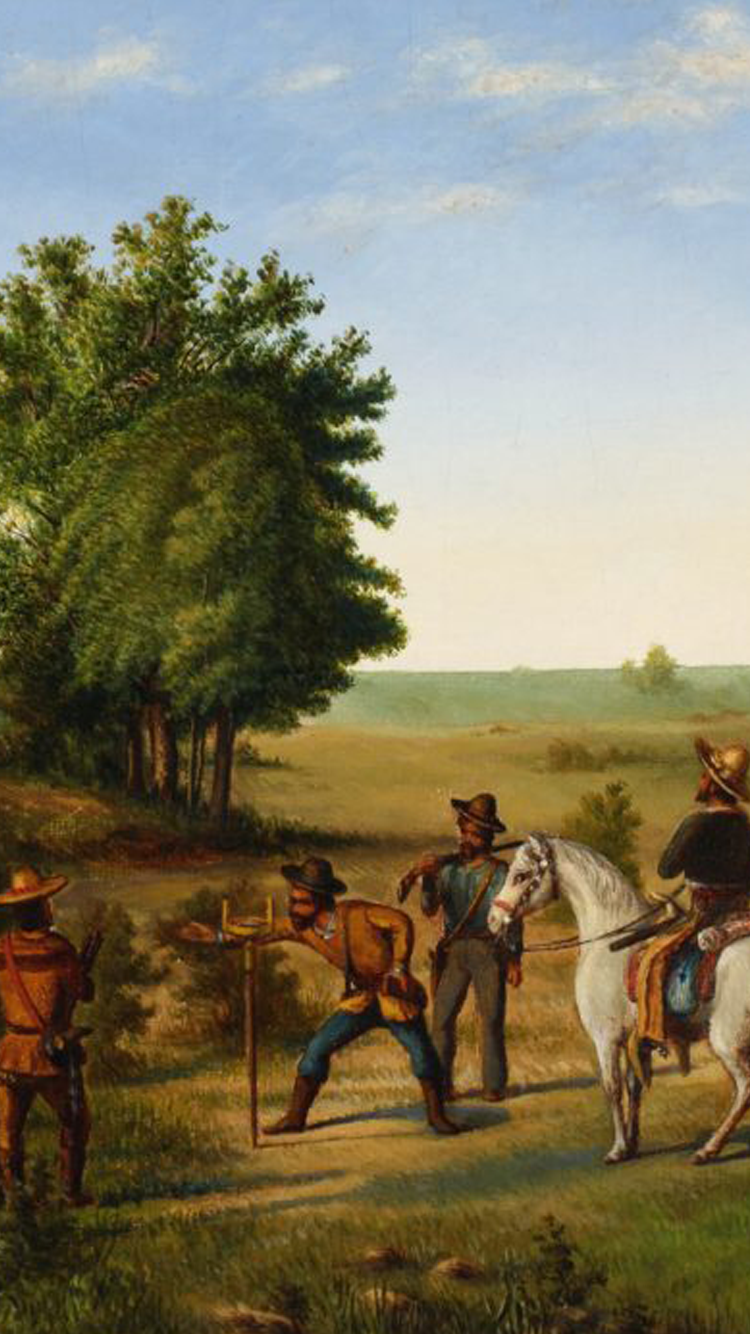
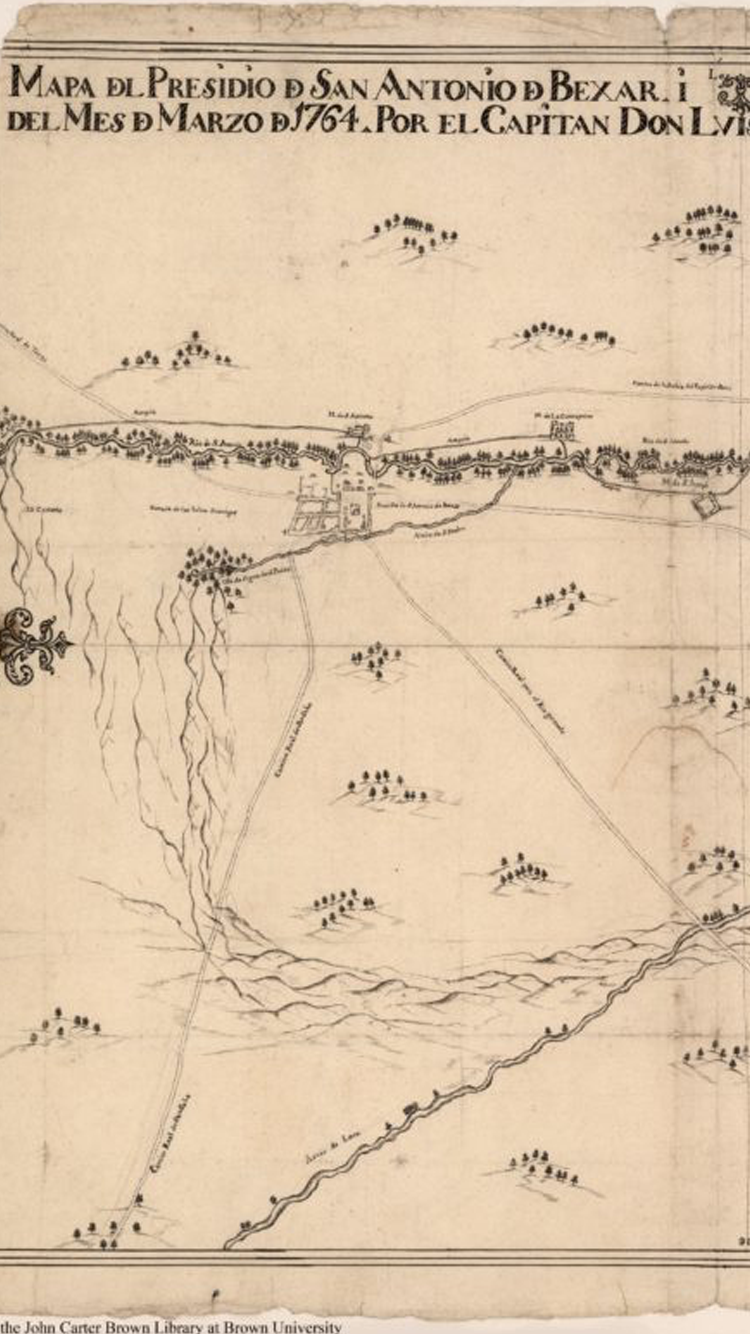
English
Español
-
The chronicle of encounters over decades and centuries tells the story of a city’s beginnings and emergence.
Beginning in the 1680s, 160 years after the conquest of Mexico, several Spanish expeditions entered the still uncharted interior of Texas from Mexico to counter French activity in East Texas and along the Gulf Coast. On June 13, 1691, an expedition led by Governor Domingo Terán arrived at a Payaya Indian ranchería on a beautiful spring-fed river. The Indians called the place Yanaguana. The Spanish named the river San Antonio because it was the feast day of St. Anthony of Padua. Eighteen years later, when the next Spanish expedition, with Capitán Pedro de Aguirre and Fray Antonio Olivares, visited the area on April 13, 1709, it stopped at a lush spring just west of the river and named it San Pedro Springs. Nine years later the viceroy of New Spain, the Marqués de Valero, authorized Governor Martín de Alarcón to establish a way station on the San Antonio River between Mission San Juan Bautista on the Rio Grande and Spanish missions in East Texas.
The Alarcón expedition arrived along the creek flowing from San Pedro Springs in late April 1718 and selected a site for Mission San Antonio de Valero, which was turned over to Franciscan missionary Fray Antonio Olivares on May 1. Four days later Alarcón founded the Presidio San Antonio de Béxar near the springs. These events marked the establishment of the isolated settlement that survived, grew, and prospered to become the City of San Antonio and Bexar County.
Audio Tour
Still uncharted by Europeans and inhabited by the Payaya Indians, who called the place Yanaguana, the San Pedro Creek was soon to be the birthplace of a bustling community, and 300 years later, home to today’s San Antonians. In 1691, a group of Spanish explorers stumbled upon the rich vegetation and wildlife of the area and made camp for the night. They gave the river the name San Antonio, after the beloved saint. In 1709, another Spanish expedition came through. The expedition leaders named the creek Agua de San Pedro. The Franciscan friar who accompanied the expedition wrote that the area “could supply not only a village, but a city, which could easily be founded here.” Nine years later, the first site of Mission San Antonio de Valero was founded downstream from San Pedro Springs and in a ceremony, Spanish Governor Don Martín de Alarcón founded the presidio, or military garrison.In the late 1600s the Spanish mounted several expeditions across the Rio Grande to the eastern edge of New Spain, founding missions and presidios to counter the French and to convert the natives to Christianity. This map, by presidial commander Luis Antonio Menchaca in 1764, shows the San Antonio community from the headwaters of the river to its confluence with the Medina River.
Following establishment of the mission and presidio and the arrival of more settlers, Spanish officials allocated land for homes and farms. The community’s first surveyors used ropes and rocks to measure and mark lot boundaries, while in later years more sophisticated instruments were used including the surveyor’s cross depicted in this historical painting.
Spanish expeditions into Texas generally included Franciscan priests who established missions for the indigenous population, soldiers who established presidios to protect the missions, and Indian guides and laborers. New Spain included all of modern Mexico, most of Central America, and the American Southwest.
-
La crónica de siglos de encuentros narra la historia de los comienzos y del crecimiento de la ciudad.
A partir de 1680, 160 años después de la conquista de México, varias expediciones españolas llegaron desde México al interior de Texas, todavía no explorado, en oposición a la actividad francesa en el este de Texas y en la Costa del Golfo. El 13 de junio de 1691, una expedición encabezada por el gobernador Domingo Terán llegó a la ranchería nativa Payaya, ubicada en un hermoso río alimentado por manantiales. Los nativos llamaban al lugar Yanaguana. Los españoles nombraron al río San Antonio, porque ese día era la fiesta de San Antonio de Padua. Dieciocho años más tarde la siguiente expedición española, que incluyó el Capitán Pedro de Aguirre y Fray Antonio Olivares, visitó la zona el 13 de abril de 1709, se detuvo en un exuberante manantial al oeste del río y lo llamó Manantiales de San Pedro. Nueve años más tarde, el virrey de Nueva España, el Marqués de Valero, autorizó al gobernador Martín de Alarcón para que estableciera una estación de paso en el Río San Antonio entre la Misión San Juan Bautista en el Río Bravo y las misiones españolas en el este de Texas.
A finales de abril de 1718, la expedición de Alarcón llegó al lado del arroyo que fluía desde los Manantiales de San Pedro y seleccionó un sitio para la Misión San Antonio de Valero, que fue entregada al misionero franciscano Fray Antonio Olivares el 1 de mayo. Cuatro días más tarde, Alarcón fundó el Presidio San Antonio de Béxar, cerca de los manantiales. Estos dos eventos marcaron la fundación de un asentamiento aislado que sobrevivió, creció y prosperó para convertirse en la Ciudad de San Antonio y el Condado Bèxar.
Audio Guía
Aún no explorado por los europeos y habitado por los Payaya, quienes llamaban a este lugar Yanaguana, el Arroyo San Pedro sería el lugar de nacimiento de una comunidad activa, y 300 años más tarde, hogar de los san antonianos de hoy.A fines del siglo XVII, los españoles montaron varias expediciones a través del Río Bravo hasta el límite oriental de Nueva España, fundando misiones y presidios para contrarrestar a los franceses y convertir a los nativos al cristianismo. Este mapa, elaborado por el comandante de un presidio Luis Antonio Menchaca en 1764, muestra la comunidad de San Antonio desde la cabecera del río hasta su confluencia con el Río Medina.
Después del establecimiento de la misión y del presidio y la llegada de más colonos, los funcionarios españoles asignaron tierras para casas y granjas. Los primeros topógrafos de la comunidad utilizaron cuerdas y rocas para medir y marcar los límites de los lotes, y en años posteriores se utilizaron instrumentos más sofisticados, incluyendo la cruz del topógrafo representada en esta pintura histórica.
franciscanos, quienes establecieron las misiones para la población nativa; los soldados establecieron presidios para proteger las misiones y a los guías y trabajadores nativos. Nueva España incluía a todo México moderno, la mayor parte de América Central y el suroeste de los Estados Unidos.

